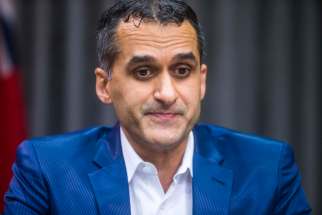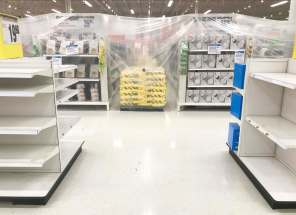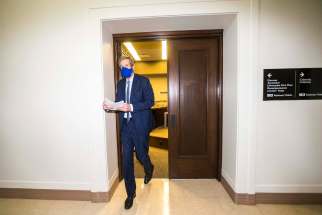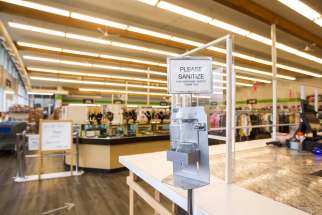Province launches rapid-testing pilot for school staff
Read this article for free:
or
Already have an account? Log in here »
To continue reading, please subscribe:
Monthly Digital Subscription
$0 for the first 4 weeks*
- Enjoy unlimited reading on winnipegfreepress.com
- Read the E-Edition, our digital replica newspaper
- Access News Break, our award-winning app
- Play interactive puzzles
*No charge for 4 weeks then price increases to the regular rate of $19.00 plus GST every four weeks. Offer available to new and qualified returning subscribers only. Cancel any time.
Monthly Digital Subscription
$4.75/week*
- Enjoy unlimited reading on winnipegfreepress.com
- Read the E-Edition, our digital replica newspaper
- Access News Break, our award-winning app
- Play interactive puzzles
*Billed as $19 plus GST every four weeks. Cancel any time.
To continue reading, please subscribe:
Add Free Press access to your Brandon Sun subscription for only an additional
$1 for the first 4 weeks*
*Your next subscription payment will increase by $1.00 and you will be charged $16.99 plus GST for four weeks. After four weeks, your payment will increase to $23.99 plus GST every four weeks.
Read unlimited articles for free today:
or
Already have an account? Log in here »
Hey there, time traveller!
This article was published 14/01/2021 (1793 days ago), so information in it may no longer be current.
Teachers, educational assistants and other school staffers will be able to jump COVID-19 testing lines to receive same-day results starting Monday, when high schoolers resume in-class learning after a month at home.
However, the province has yet to confirm where in line teachers are on the immunization priority list.
On Thursday, Manitoba unveiled plans for its first Fast Pass testing centre, where eligible educators can get tested to receive results within hours.
School staff, including custodians, bus drivers and workers in school-based early learning and child care facilities, will be able to schedule an appointment at 1066 Nairn Ave., in Winnipeg, as early as Jan. 18.
Eligible clients must have valid employment identification and be symptomatic, identified as a close contact as a result of an exposure at school, or have a symptomatic household member.
The pilot project is expected to start by testing 20 to 40 school staff daily with Songbird Hyris bCUBE equipment. Negative results will still need to be confirmed at the provincial lab, but early positive results will require educators to start self-isolating right away.
Officials aim to expand the pilot to 80 tests daily at the end of January, and later, double that.
“It is certainly our hope that this will work to alleviate absences, to a certain degree… and also, to address that anxiety that occurs when a teacher is told there’s a possible exposure,” said James Bedford, president of the Manitoba Teachers’ Society.
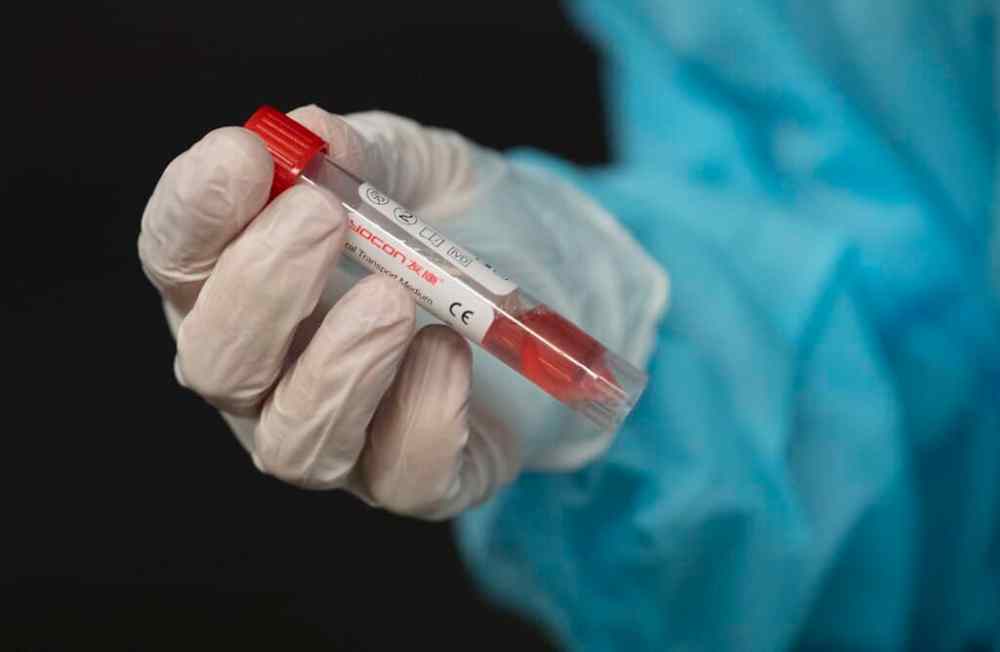
Following the announcement, Bedford said Thursday the union that represents 16,000 public school teachers will be watching closely to ensure testing capacity meets demand.
The inaugural site will initially only be open to staff who work directly with students in Winnipeg, Seven Oaks, River East Transcona, Seine River and Hanover school divisions. Those districts were chosen by Manitoba Health, Education Minister Cliff Cullen said.
Staff from other divisions will be able to access the site in February.
The pilot will start off slow, Cullen said, adding the plan is to expand to additional locations. Winkler and Brandon could be home to future sites.
Cullen also confirmed Thursday the province is not making any adjustments to how schools operate when high schoolers resume in-class instruction Monday.
Students are expected to return to routines similar to those in place pre-winter break, while the 28 Hanover-area schools that were in code red in the fall are now in code orange.
“Teachers are excited to see kids face-to-face again,” said Emery Plett, principal of Steinbach Christian School, which will welcome back grades 7-12 students, who haven’t studied in school since late November.
Politicians and public health officials alike have repeatedly said pandemic protocols in schools are working, and the novel coronavirus hasn’t been spreading significantly within such facilities.
“It is certainly our hope that this will work to alleviate absences, to a certain degree… and also, to address that anxiety that occurs when a teacher is told there’s a possible exposure.” — James Bedford, president of the Manitoba Teachers’ Society
Acting deputy chief provincial public health officer Dr. Jazz Atwal said Thursday officials have “lots of evidence” there’s a much lower risk of contracting COVID-19 in a school than in the general population.
He told reporters the province’s vaccine task force will decide how teachers are prioritized.
The Canadian Teachers’ Federation is pushing for teachers to be next in line for vaccinations — right behind health-care workers and vulnerable groups.
President Shelley Morse is critical of government messaging that schools are safe, given there isn’t mandatory masking for all ages, many classes cannot accommodate two metres of distancing, and ventilation in old buildings can be poor.
Ontario has announced a plan to include teachers in the second phase of its vaccine roll-out; Morse, who is based in Nova Scotia, said she hopes other provinces follow suit.
“Because of our environment and because of the amount of people teachers and education workers come into contact with every day, we do need to be on a priority list,” she said.
MTS also indicated Thursday it wants to see a provincial plan that prioritizes teachers’ immunization.
Since 2021 began, there have been 74 cases among Manitoba students and 11 cases involving school staff, according to the latest public health data.
— with files from Katie May and Danielle Da Silva
maggie.macintosh@freepress.mb.ca
Booking a rapid test
Education staff can schedule slots at the new Fast Pass site in Winnipeg by phoning the general appointment line (1-855-268-4318) as early as Jan. 17.
The inaugural Dynacare-operated site, which will run in tandem with a neighbouring drive-thru testing site, will be open 7 a.m. to 3 p.m. daily.

Maggie Macintosh reports on education for the Winnipeg Free Press. Funding for the Free Press education reporter comes from the Government of Canada through the Local Journalism Initiative.
Our newsroom depends on a growing audience of readers to power our journalism. If you are not a paid reader, please consider becoming a subscriber.
Our newsroom depends on its audience of readers to power our journalism. Thank you for your support.


